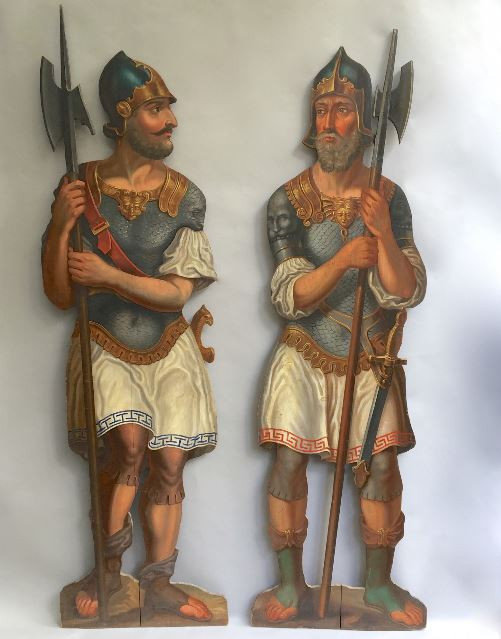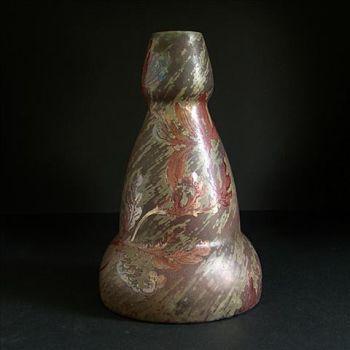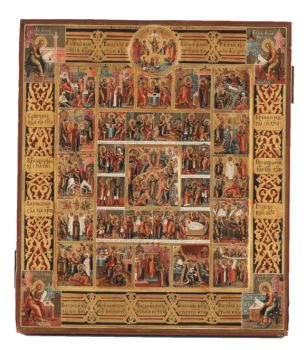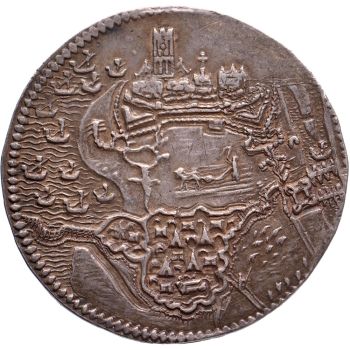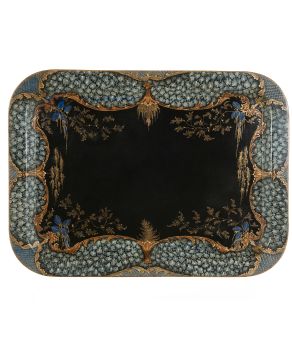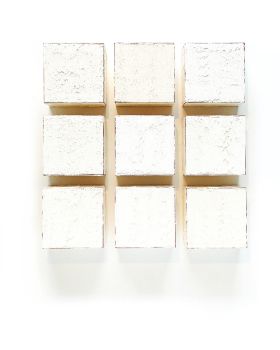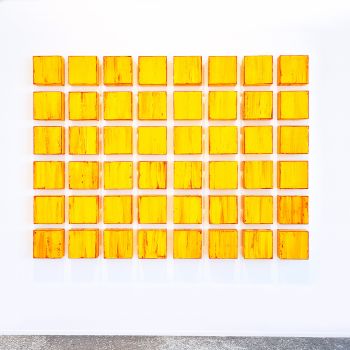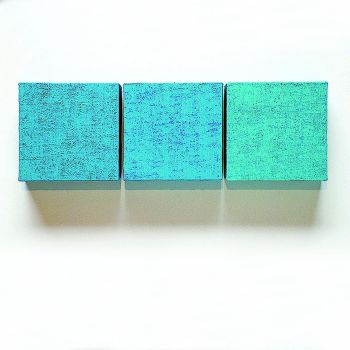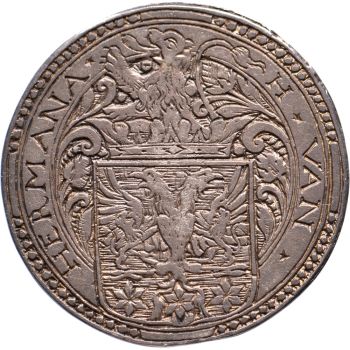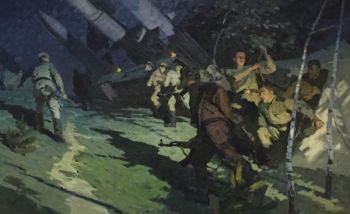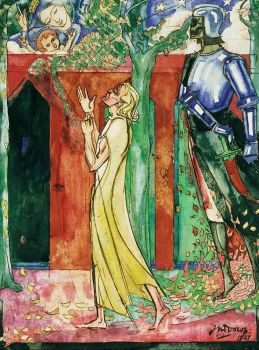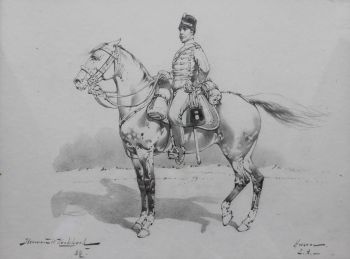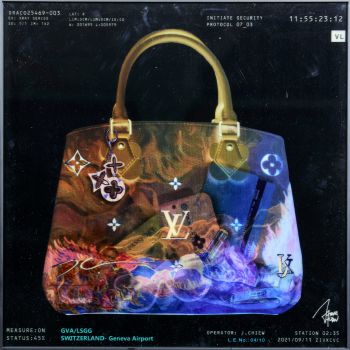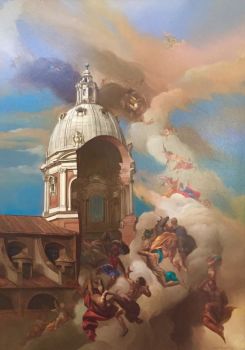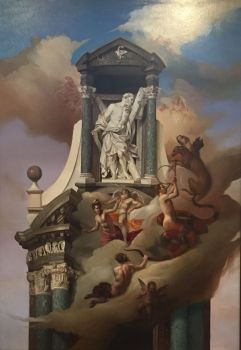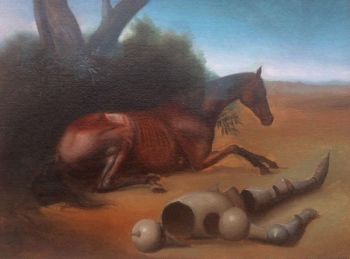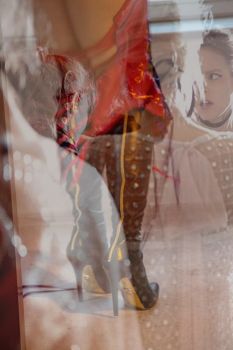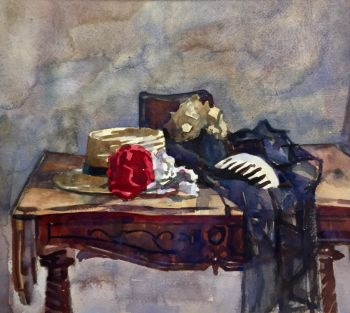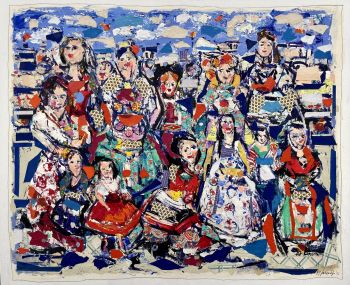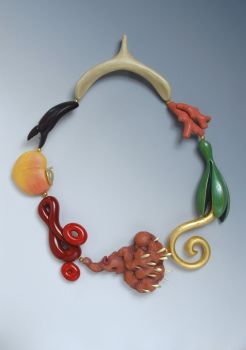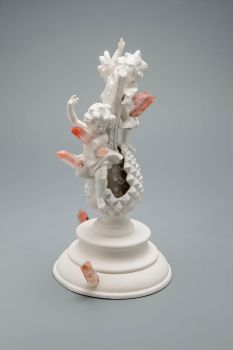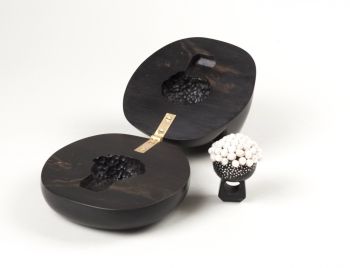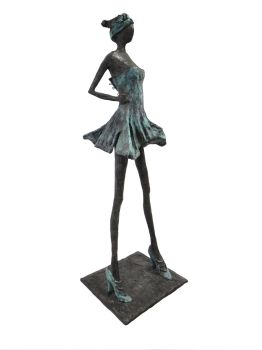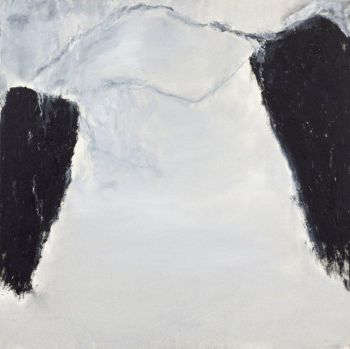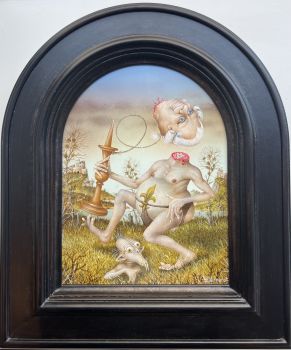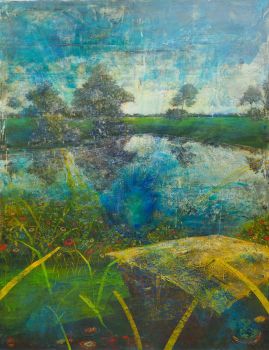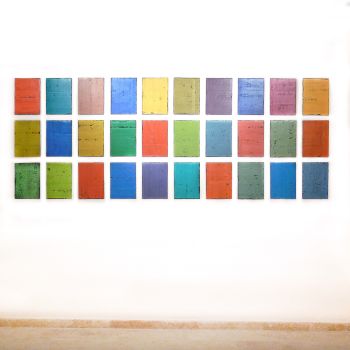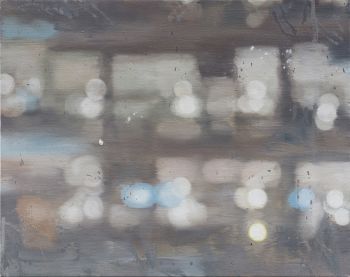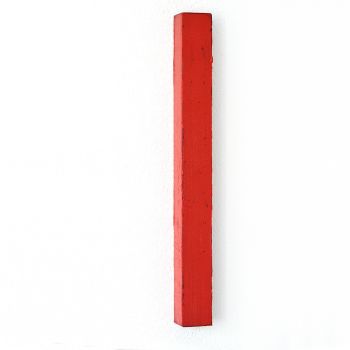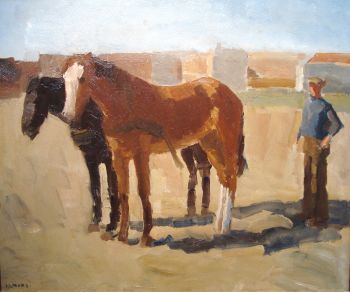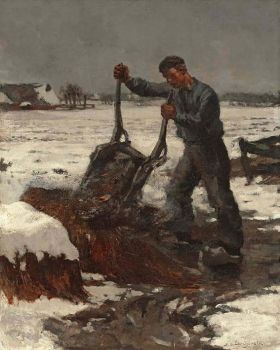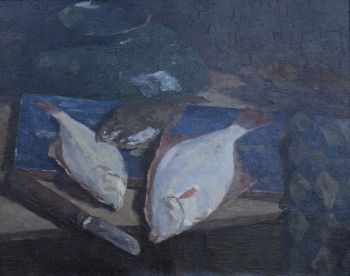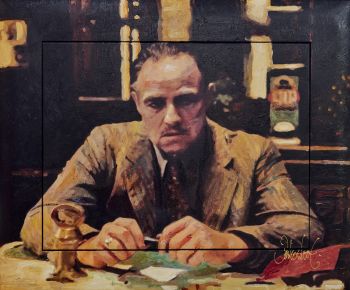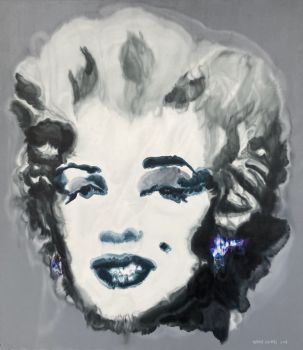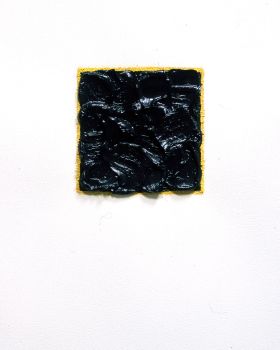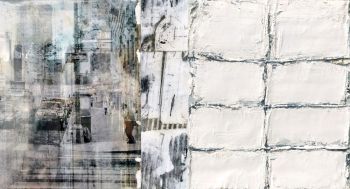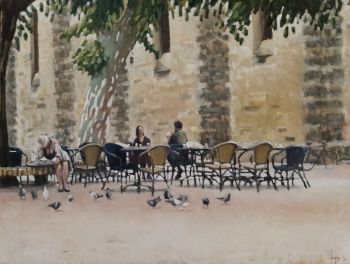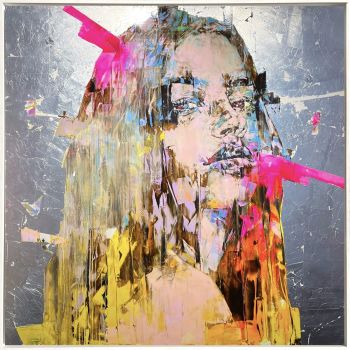Two dummy boards of Soldiers or Guards 18th century
Unbekannter Künstler
HolzFarbe
187 cm
ConditionExcellent
Derzeit nicht über Gallerease verfügbar
- Über KunstwerkTwo life-sized painted wooden soldiers or guards, with chamfered edges to increase the illusion of three-dimensions. On the backside an iron bracket is attached; the soldiers can stand freely by attaching a wooden rail into the bracket. Dummy boards were very popular during the 18th and early 19th centuries, especially in England's country houses. Their function is still a mystery. They certainly had a decorative function and could serve to entertain guests, but it is also claimed that they should call the suggestion that there were actually people in the house during the periods the family was traveling. The life-sized trompe l'oeil painted figures with representations of soldiers, servants, children or animals were placed in the hall, in a staircase or next to the fireplace. The equipment of these guards shows a mix of elements from the classical period, late Middle Ages and early Renaissance. For example, the halberd is based on a model from the late 15th or 16th century.
A few small repairs to the boarders and renewed rails to allow the boards to stand upright.
Respectively 180 and 187 cm high. - Über Künstler
Es kann vorkommen, dass ein Künstler oder Hersteller unbekannt ist.
Bei einigen Werken ist nicht zu bestimmen, von wem sie hergestellt wurden, oder sie wurden von (einer Gruppe von) Handwerkern hergestellt. Beispiele sind Statuen aus der Antike, Möbel, Spiegel oder Signaturen, die nicht klar oder lesbar sind, aber auch einige Werke sind überhaupt nicht signiert.
Außerdem finden Sie folgende Beschreibung:
•"Zugeschrieben …." Ihrer Meinung nach wohl zumindest teilweise ein Werk des Künstlers
•„Atelier von ….“ oder „Werkstatt von“ Ihrer Meinung nach eine Arbeit, die im Atelier oder in der Werkstatt des Künstlers, möglicherweise unter seiner Aufsicht, ausgeführt wurde
•„Kreis von ….“ Ihrer Meinung nach ein Werk aus der Zeit des Künstlers, das seinen Einfluss zeigt, eng mit dem Künstler verbunden, aber nicht unbedingt sein Schüler
•"Art von …." oder „Anhänger von ….“ Ihrer Meinung nach eine Arbeit, die im Stil des Künstlers ausgeführt wurde, aber nicht unbedingt von einem Schüler; kann zeitgenössisch oder fast zeitgenössisch sein
•„Art von ….“ Ihrer Meinung nach ein Werk im Stil des Künstlers, aber späteren Datums
•"Nach …." Ihrer Meinung nach eine Kopie (jegliches Datums) eines Werks des Künstlers
• „Unterzeichnet …“, „Datiert …“. oder „Beschriftet“ Ihrer Meinung nach wurde das Werk vom Künstler signiert/datiert/beschriftet. Das Hinzufügen eines Fragezeichens weist auf einen Zweifel hin
• „Mit Unterschrift …“, „Mit Datum …“, „Mit Aufschrift ….“ oder „Trägt Unterschrift/Datum/Beschriftung“ ihrer Meinung nach die Unterschrift/Datum/Beschriftung von jemand anderem als dem Künstler hinzugefügt wurde
Artwork details
Related artworks
Unbekannter Künstler
EIN GILT-SILBER SRI LANKAN DOKUMENT SCROLL CONTAINER19th century
Preis auf AnfrageZebregs & Röell - Fine Art - Antiques
1 - 4 / 12Unbekannter Künstler
UITGEBREIDE FEESTDAGENIKOON MET PASSIECYCLUS19th century
Preis auf AnfrageHeutink Ikonen
Unbekannter Künstler
Monumentale Holzikone: Der heilige Nikolaus von Mozaisk1600 - 1650
Preis auf AnfrageKunsthandel H.W.C. Dullaert Icons
Unbekannter Künstler
An Indian part-gilt silver-clad ceremonial sceptre or mace with a tiger’s head1850 - 1900
Preis auf AnfrageZebregs & Röell - Fine Art - Antiques
 Kuratiert von
Kuratiert vonDanny Bree
Rene Rietmeyer
"USA South Florida January 2006"2006
Preis auf AnfrageEuropean Cultural Centre Collection
1 - 4 / 24- 1 - 4 / 24
- 1 - 4 / 24

